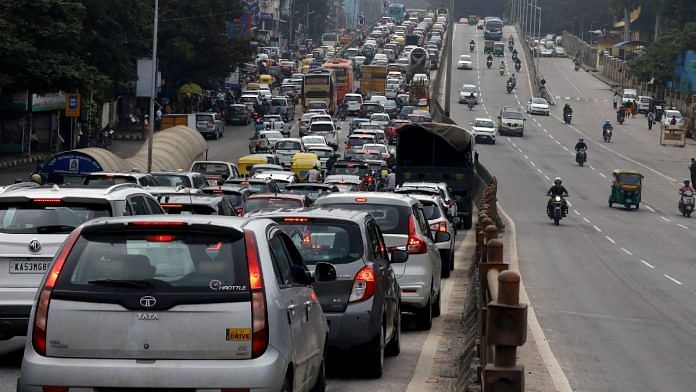Bengaluru: It has been ranked the world’s fastest growing tech hub, but Bengaluru continues to struggle with basic infrastructure problems.
The city’s civic body — Bruhat Bengaluru Mahanagara Palike (BBMP) — has not had an elected council for over a year, nor does the city have a dedicated in-charge minister, like other districts in Karnataka.
From heading ward committee meetings to approving budgets, civil servants appointed by the government have been tasked with running the city. “A mixed bag”, is how BBMP Commissioner Gaurav Gupta describes the situation.
Karnataka’s IT firms, mostly concentrated in Bengaluru, churned out exports worth Rs 1.16 lakh crore between March and October 2020, in the midst of a pandemic. The city is home to the majority of India’s IT firms, and is believed to contribute to more than 30 per cent of India’s IT exports.
However, despite its worldwide fame as a hub of the IT industry, Bengaluru’s poor infrastructure has often been its black spot. One of its manifestations is the city’s notorious traffic congestion, which can make travel times much longer, with potholes being a pervasive problem as well.
“We are close to adding 5 million (50 lakh) people in the last 10 years, taking the city’s population to 13.5 million (1.35 crore) people. Development projects that were charted out some 10-15 years ago in the city’s peripheries are being implemented now,” BBMP Commissioner Gupta told ThePrint on what ails Bengaluru’s roads.
“Projects like the metro rail and gas pipeline have been extended, which have led to the inevitable digging up of roads, since roads are not just carriers of people and vehicles, but also utilities,” he added.
Also Read: Bengaluru most accessible and attractive city in India for remote workers, study finds
Rife with problems
Rs 20,060 crore. That is the amount of money that has been spent on Bengaluru’s roads in the last five years, according to Karnataka Chief Minister Basavaraj Bommai’s statement to the Karnataka Legislative Council this September.
He also noted that of the 11,287.05 km of roads in the city, “not a single kilometre” was free from problems.
“We had identified road repair works, reconstruction and re-laying (of roads) at various locations, but incessant rains stalled work. We have seen three times more than usual rains between October and November in the city, a first in three decades. Asphalting cannot happen in rains,” Gupta pointed out, adding that pending work will be sorted out in three weeks, that is, by the end of December.
Currently, about 50 km of road in the city centre has been adopted for reconstruction under the Smart City project. “We have had contract management issues with the project, which led to delays, but they are being resolved now,” Gupta said.
Lack of coordination, feedback
Gupta said lack of feedback proves a major challenge for authorities. “Our biggest challenge is getting feedback because issues are not universal. Every ward and locality has unique problems and unless people participate in ward committee meetings or via resident welfare associations etc, we have no interaction,” Gupta said.
He added that not knowing where to go with grievances is leading to more problems.
“Any metropolitian city has different agencies. Coordination at the top level is good but at the bottom level there must be more,” Gupta said about the lack of coordination between multiple agencies taking up projects in Bengaluru.
“The tech sector has come into the city’s periphery. Such issues are predominant in the high-growth sector, where infrastructure has to be built for people jostling for space,” he added. “For example, the Outer Ring Road connecting Sarjapur to Marathahalli has an undergoing gas pipeline work and water line work from Cauvery Stage 5. We cannot take up one work unless another is completed. They are sequential.”
(Edited by Saikat Niyogi)
Also Read: Gangs of Bengaluru: ‘Silent’ Sunil, Ajith ‘Malayali’ & the dark underbelly of India’s IT capital






